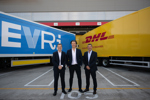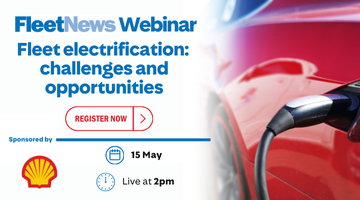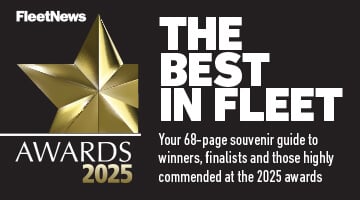By Richard Peak, director at Nextbase
In both the world of fleet management, and business in general, sustainability has scarcely been more important, with more and more businesses, partners and employees considering it one of their fundamentals to operate.
Transport contributes almost a quarter of the UK’s greenhouse gas emissions, meaning people are ever more conscious of the impacts that cars and other vehicles will have on net-zero and climate change targets.
Within this, fleets themselves face a growing pressure to be more sustainable to help cut these emissions. Both from the outside world, and from within.
It is worth mentioning, however, that it is easier said than done for most fleets to achieve this in the short term, as a majority of vans and trucks in fleets are fuelled by diesel and will need to be for some time yet.
Adopting the use of electric vehicles (EVs) is an obvious a way to make strides towards sustainability.
On top of savings on fuel and reduced emissions, EV’s generally require fewer repairs and less maintenance than diesel fuel cars.
However, purchasing a full fleet of electric vehicles proves far too costly for most, with long waiting times also being a factor that makes the transition difficult.
Don’t despair though, even if you can’t afford a full electric fleet just yet, there are things you can do to point yourself in the right direction.
As well as an upgrade to an electric drive train, one of the best ways to improve fuel efficiency, mileage and cut emissions is to use newer vehicle models.
Initiatives such as the ultra-low emissions zone (ULEZ) in London single out 2005 as the year in which cars will likely pass emissions thresholds and significant strides in engine technology have been made since then.
It is unlikely that many vehicles in your fleet are as old as that, but with the two or three years of Covid seeming to blend into one, you could be operating vehicles that are older than you think.
Similarly, switching from diesel to petrol, after a period where the advice was the opposite, can prove to be beneficial to a fleet in terms of cutting pollution, if not CO2 emissions.
It may seem obvious, although it is rarely followed through in my experience, that taking the time to monitor excess weight and loads being carried by your fleet on journeys can also make a dent in your fuel efficiency.
Getting rid of all the excess weight that isn’t being used across hundreds of cars and thousands of miles, adds up into something that is worth looking at.
Alongside upgrading hardware and the more analogue ways to improve efficiency and reduce emissions, technology is advancing at a rate of knots.
Telematics have been in use for some time, and GPS and clever software can help plot out efficient routes for drivers.
More help is coming too, Nextbase has seen dashcams go from a niche consumer product, to an essential for fleet drivers everywhere.
They will soon be able to help drivers avoid collisions, avoid traffic or help drivers stay in touch with the fleet hub.
Keeping track of vehicle diagnostics through the use of dashcam technology, telematics and real-time driving analysis, can help to keep down maintenance costs for fleets, saving time, money, and fuel.
In the future, these tools will only become smarter which will lead to fleet managers making more informed decisions on how to achieve substantiality.
Customers care about a service being sustainable, and so should businesses and so should fleets and their staff.
It’s important to adopt a positive mindset with your employees and encourage them to see the bigger picture.
Educating fleet staff on substantiality and why it important to the business as well as to them (efficient routes also reduce time on the roads) is no easy task but it is becoming more and more key.
If done correctly, a sustainable fleet is one that values efficiency, connects with its drivers, and appeals to customers from the outside looking in.

















Login to comment
Comments
No comments have been made yet.